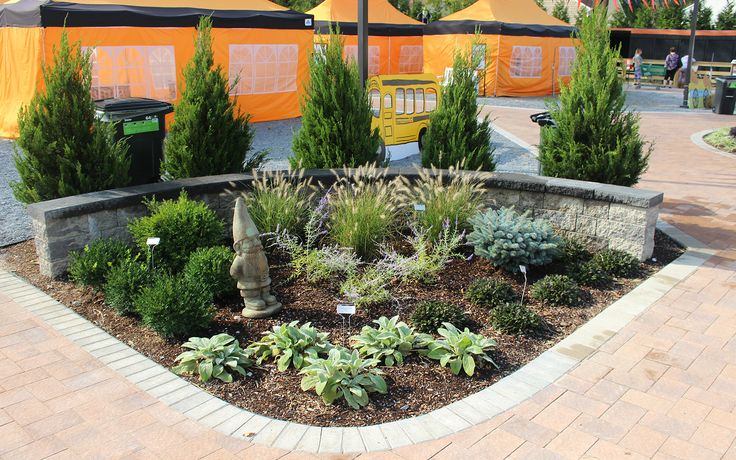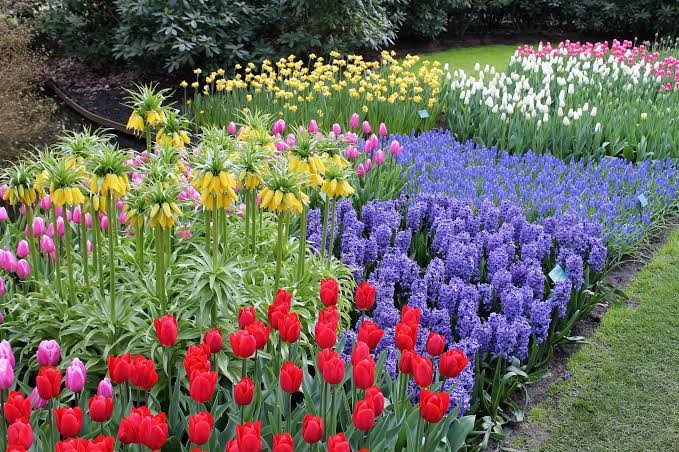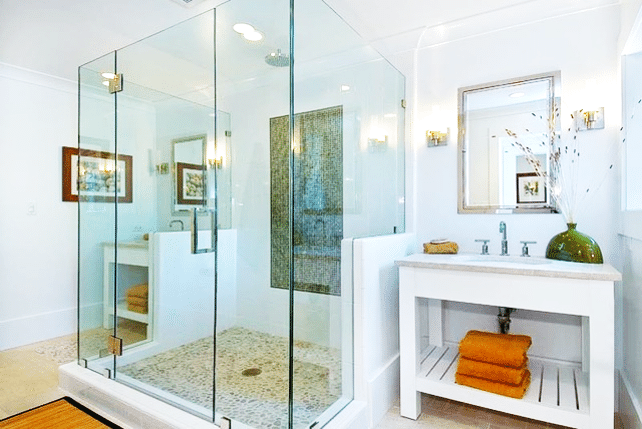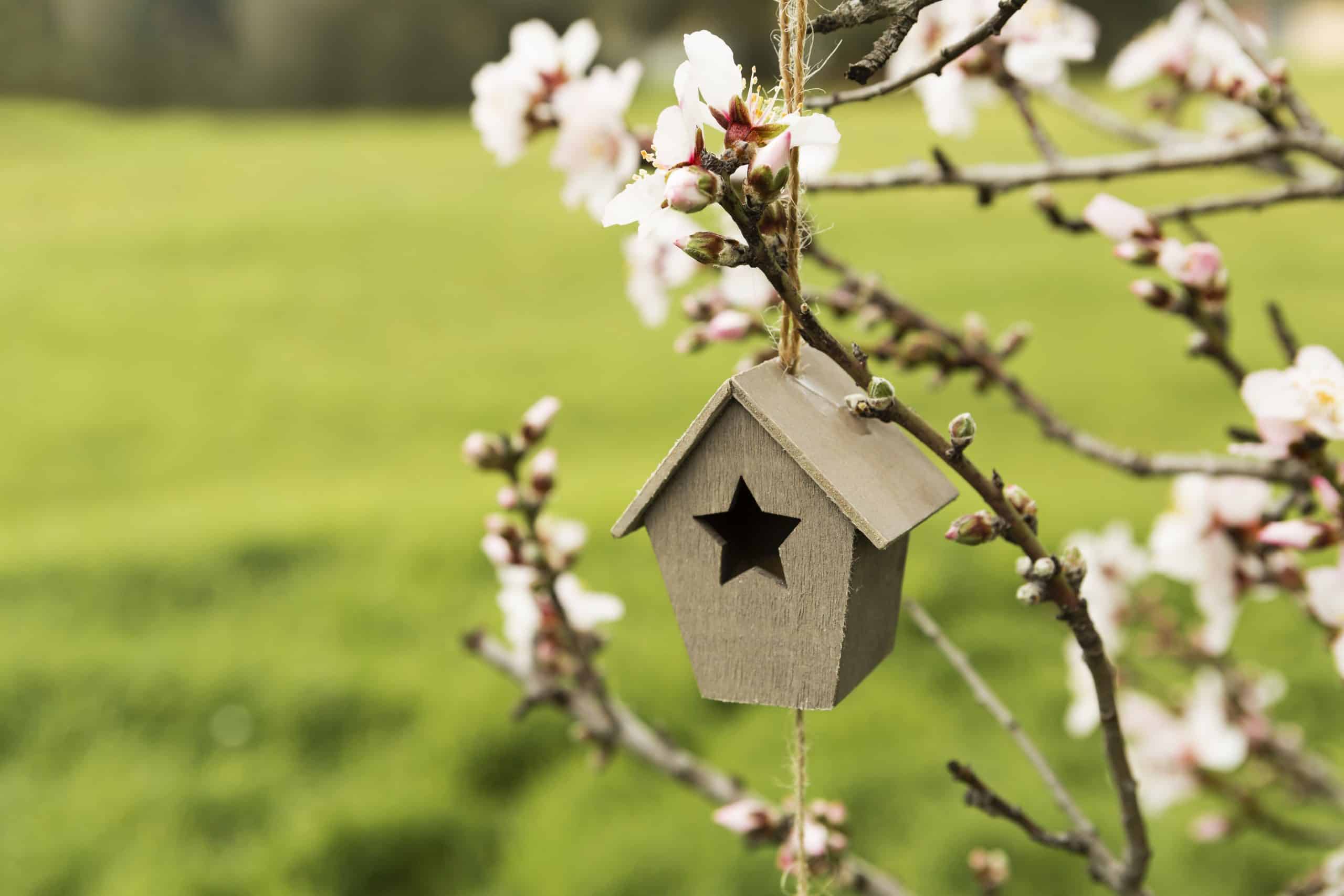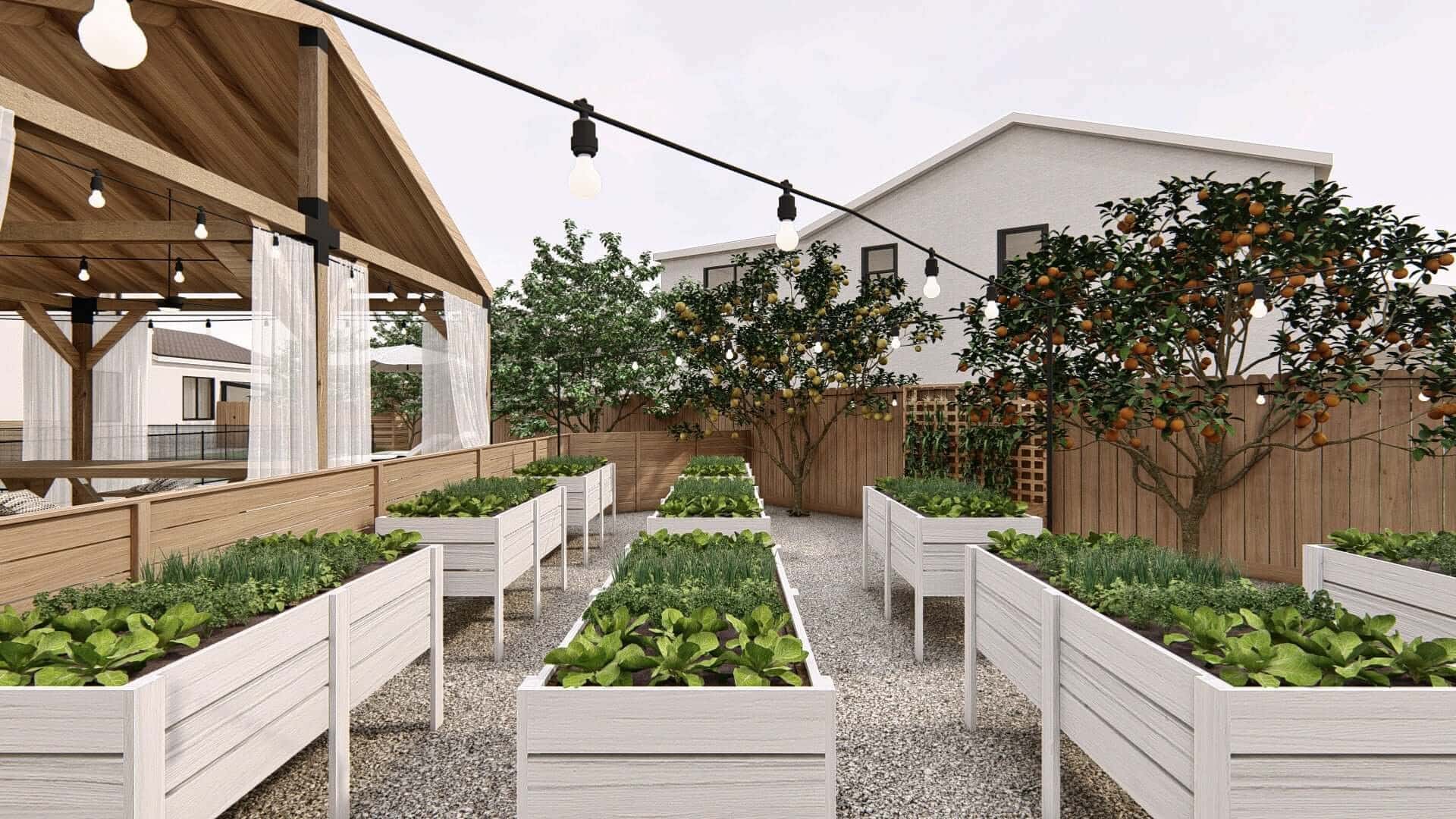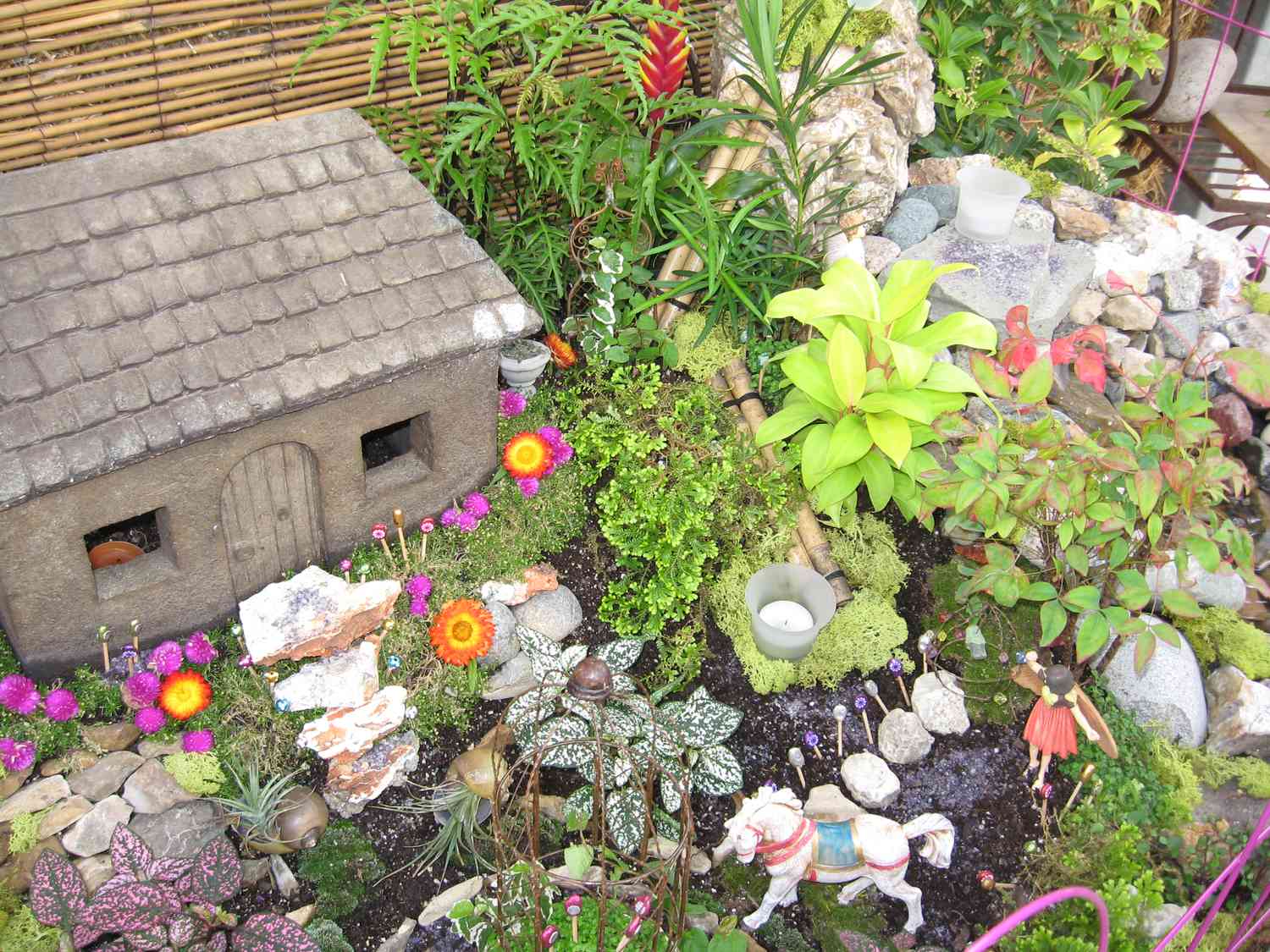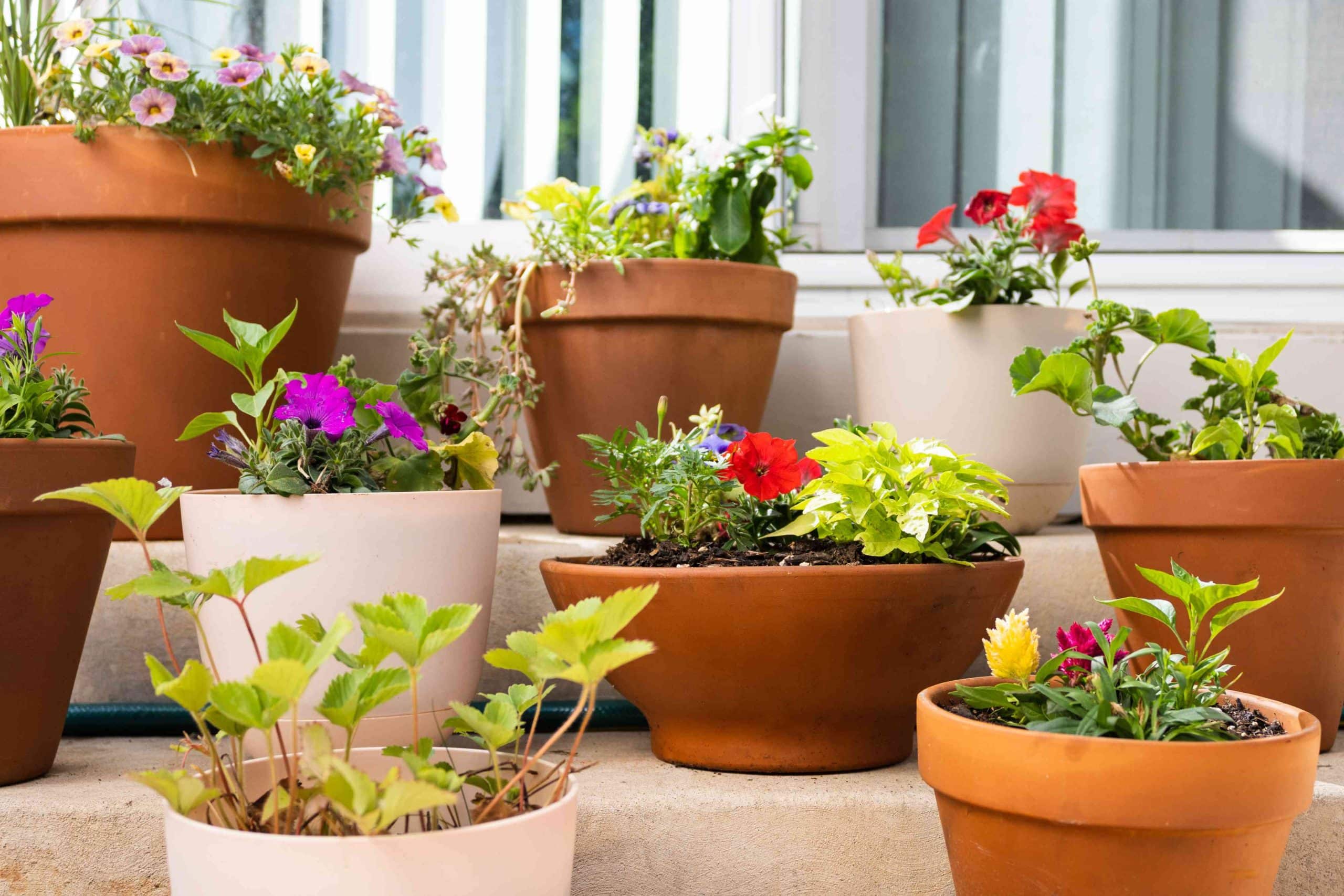Have you ever fantasized about exploring a whimsical garden filled with enchanting scents and brilliant colors? For many years, English cottage gardens served as a model for gardeners worldwide. These classic English garden ideas deftly combine the splendor of the outdoors with a hint of romance. Flowers, herbs, and shrubs are grown in English cottage gardens with an organic, free-flowing aesthetic to create a tapestry of color and texture.
Envision a garden with a profusion of hollyhocks in bloom, delicate roses, and wisteria pouring down the walls, all tucked away between meandering paths. The options are numerous, from picking the correct plant species to adding rustic elements like arbors and birdbaths. As we discover the beautiful world of English cottage garden design ideas, get ready to be taken to a peaceful and charming place that will drive you to construct your enchanted haven.
1. Mix-Match Flowers
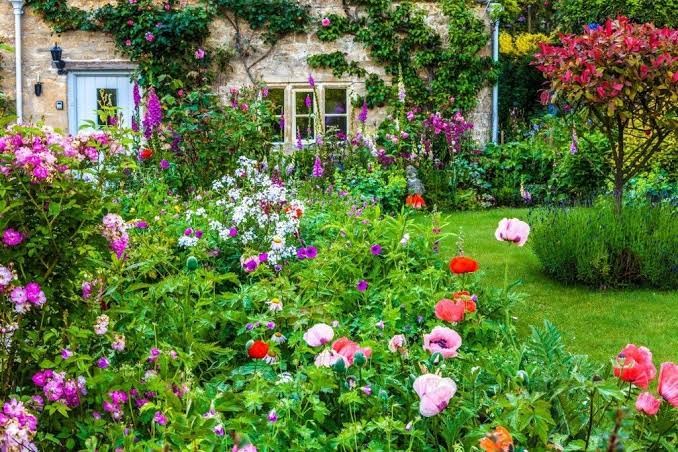
The lovely combination of flowers is one of the distinctive characteristics of English cottage gardens. A natural, spontaneous appearance is desired to emulate the untamed beauty of nature. Choose a range of flowering plants that blossom at various periods during the growing season to put this concept into practice. Common choices include roses, peonies, delphiniums, daisies, foxgloves, and lavender.
Taller plants should be layered towards the rear of the bed, and smaller ones should be layered towards the front, adding interest and depth to the visuals. Instead of gathering the various flower varieties separately, mix and match them to enable them to merge easily.
To ensure they coexist successfully, consider each plant’s water, soil type, and light exposure needs. If you use a mix-and-match strategy for flowers, your cottage garden will be filled with brilliant colors and a lovely visual banquet for the senses.
2. Construct Winding Pathways
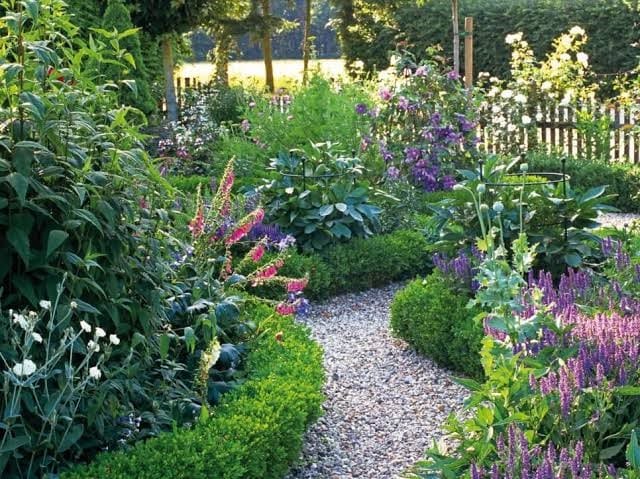
English cottage gardens are known for their meandering paths, which give the entire landscape a whimsical and exploratory feel. These paths encourage exploration and provide a fun tour of the garden. For example, use gravel, stepping stones, or bricks to make meandering pathways.
Gravel paths can bend and wind around the garden and have a charming rustic feel. Stepping stones give a walkway a natural, organic sense while directing tourists. Brick walkways give the garden a more conventional, structured appearance with a hint of elegance.
To further enhance the sensory experience, think of adding lush greenery and fragrant flowers to the pathway’s margins. Your English Garden ideas will inspire guests to stroll and find its hidden gems with meandering pathways, producing an intriguing and all-encompassing experience inside the landscape.
3. Add a Rustic Arbor

A rustic arbor adds a romantic touch and creates a lovely focal point to your English cottage garden. A rustic arbor usually comprises a wooden framework covered in floral vines or other climbing plants, and it produces a charming area in the garden or a welcoming entry.
To achieve a genuine rustic aesthetic, choose aged or distressed wood. The arbor may stand alone or be placed against a wall or fence. The arbor becomes entwined with the climbing plants as they develop, resulting in a magnificent canopy of flowers and leaves.
The rustic arbor offers a pleasant pathway or a shaded hideaway in addition to being an attractive design feature. Your English cottage garden will have a romantic atmosphere with the arbor as a backdrop and provide a peaceful haven for reflection and relaxation.
4. Bring in a Water Feature
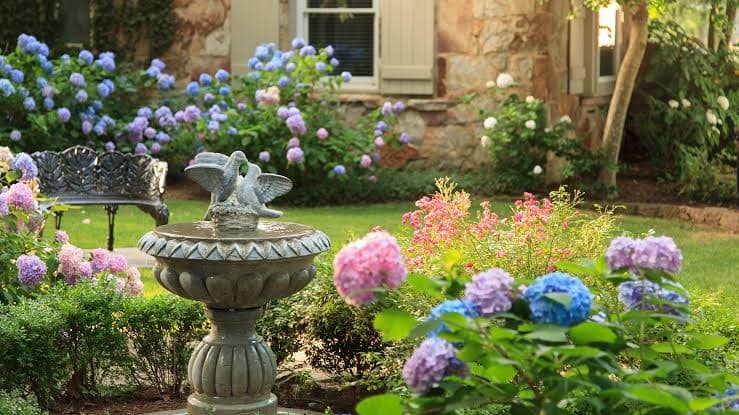
When adding a water feature, your English cottage garden will have a calming and magical touch. A bubbling fountain can provide the soothing sound of running water, which can help relax the environment.
A birdbath enhances the garden’s aesthetic appeal and serves as a gathering place for birds, giving it a livelier, more natural feel. If there is enough room, a pond can be ornamented with water lilies and other aquatic plants to transform it into a peaceful haven.
Place the water feature wisely while considering how the garden is laid out and ensuring it combines well with the nearby plants and buildings. Your English cottage garden will become even more charming and peaceful thanks to the sparkling reflections and the soft splashing or gurgling noises they produce.
5. Plant Climbing Species
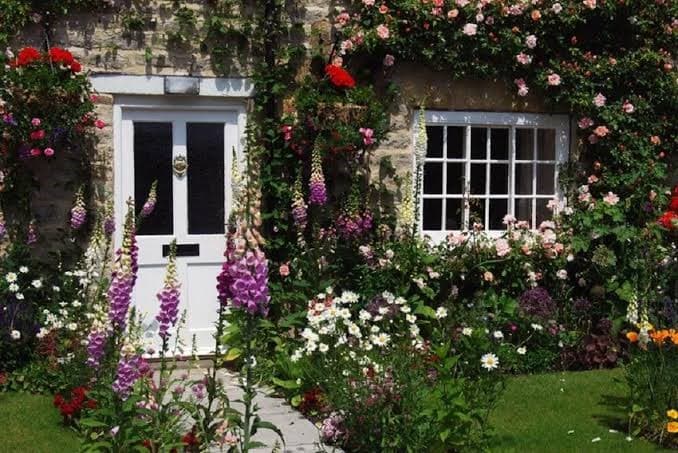
Climbing plants is one of the excellent English garden ideas that give your English cottage garden a touch of natural beauty and offer vertical intrigue. Climbers like clematis, honeysuckle, jasmine, and climbing roses maximize small spaces while producing magnificent visual displays.
Trellises, fences, walls, or pergolas can support your climbers. As they develop, they will entwine with these buildings and envelope them with an abundance of vibrant blossoms and luxuriant greenery. Climbers’ vertical growth gives your garden perspective and depth, which makes it appear larger and more enticing.
To guarantee that each climbing plant thrives in your garden, consider its particular demands, including soil type, sunlight exposure, and pruning requirements. Climbing plants will turn your English cottage garden into a beguiling, picturesque retreat with elegant ascension and fragrant blossoms.
6. Include Aromatic Herbs
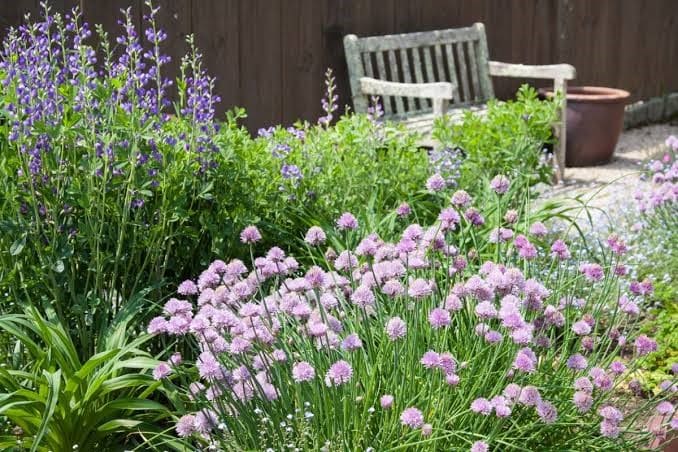
Adding fragrant herbs to your English cottage garden enhances the space’s aroma and offers a functional and versatile element. Herbs with fragrant aromas like rosemary, thyme, lavender, and mint have culinary and therapeutic uses.
Plant these herbs alongside seating places, in herb gardens, or along the borders of garden beds to unleash their energizing scents when you brush across them. These herbs’ fragrant oils produce a calming and revitalizing atmosphere.
Your yard’s biodiversity is increased by the pollinators that aromatic herbs attract, including bees and butterflies, in addition to their alluring scents. Including aromatic herbs in your English cottage garden offers a sensory treat that improves the overall experience, whether used for aromatherapy, cooking, or to appreciate their aromas.
7. Include Whimsical Garden Structures
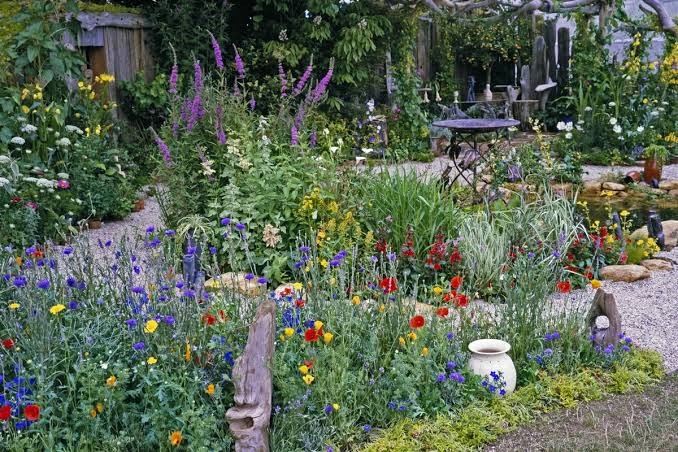
Your English cottage garden will gain a lively and enchanted character with the addition of whimsical garden buildings. These buildings act as points of interest and add visual intrigue, inspiring awe and magic.
Use attractive wooden swings suspended from tree branches, colorful birdhouses tucked amid the foliage, or old wheelbarrows filled with vibrant flowers. Ornate gates and arbors, whimsical statues, and fairy garden elements are further alternatives to English garden ideas.
These constructions can be created with sophisticated designs, recycled materials, or artifacts given a new use. They give your yard a unique and alluring feel by adding a dash of individuality, whimsy, and nostalgia. You may create a location that inspires the imagination and allows guests to wander around and find the hidden secrets of your English cottage garden by including imaginative garden constructions.
8. Plant Bulbs for Spring Colors
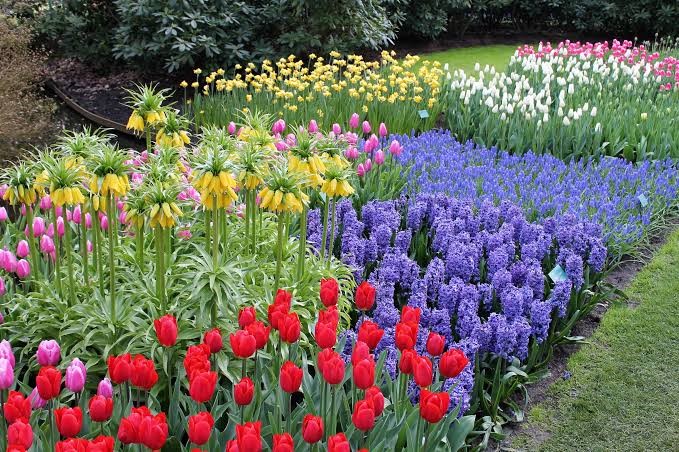
Your English cottage garden will have a lively and alluring exhibit after the winter if you plant bulbs for spring color. Daffodils, tulips, crocuses, and hyacinths are just a few of the colorful bulbs that give the yard a feeling of rebirth and freshness.
To produce a vibrant and ever-changing spring spectacle, select a selection of bulbs that offer various colors, heights, and bloom dates. Before the soil freezes, grow them in the autumn at the appropriate depth and distance for each variety of bulb.
You may think of the heights and colors of the bulbs when you position them in your garden beds, boundaries, or containers to produce pleasant combinations and harmonious designs. You may guarantee a wonderful and magical start to the gardening season by planting spring-blooming bulbs, bringing a kaleidoscope of petals to life in your English cottage garden.
9. Develop a Secret Garden Corner
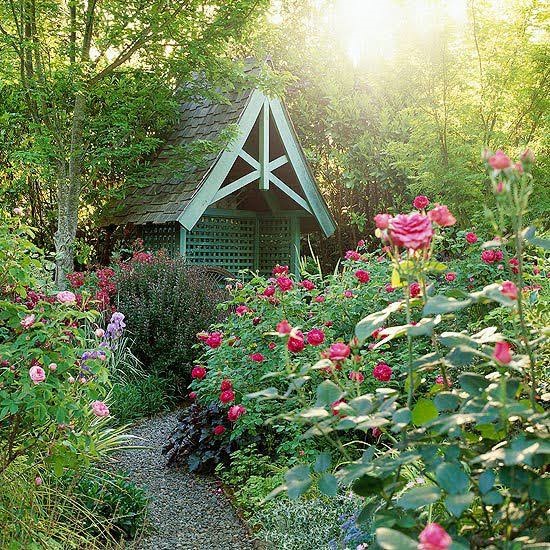
If you create a secret garden corner, your English cottage garden will gain a sense of mystery and magic. Use an arbor, trellis, or overhanging branches to make a natural entryway to develop a private garden hideaway.
Add a bench, cozy chairs, or a hammock to relax and enjoy the serene ambiance. To evoke a feeling of intimacy and privacy, encircle the nook with lush vegetation, climbing plants, and aromatic flowers. For a mystical glow in the evening, add soft illumination to the space with lanterns or string lights.
A hidden garden nook lets you disconnect from the outer world and reconnect with nature in a private hideaway within your English cottage garden, whether concealed in a corner or snuggled amid a riot of blossoms.
10. Plant to Promote Wildlife
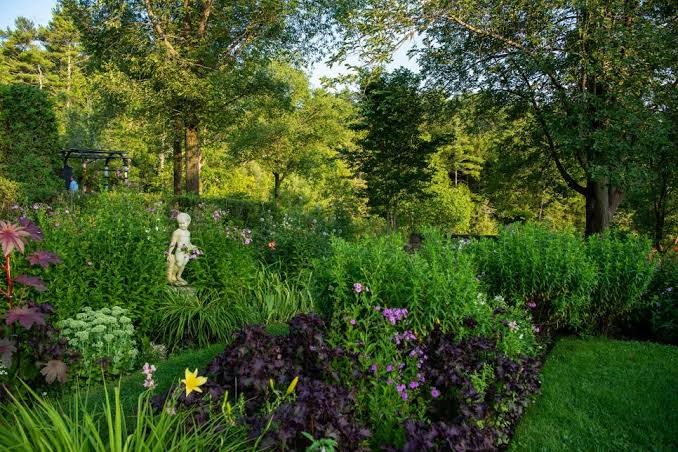
In addition to enhancing your English cottage garden’s natural beauty, fostering fauna promotes a healthy and vibrant ecology. Adding items that encourage and promote the presence of birds, butterflies, bees, and other beneficial insects may create a home for them.
Plant native shrubs, trees, and flowers that offer animals seeds, berries, or nectar. One of the incredible English garden ideas is incorporating a birdbath, a small pond, or a shallow water feature to provide a water source. To provide cover and nesting locations, leave some garden sections undisturbed.
To protect wildlife’s well-being, avoid pesticides and choose organic gardening techniques. Your English cottage garden can come alive with the sounds and sights of nature if you encourage and care for wildlife. This will also help with conservation initiatives and create a peaceful environment.
11. Include a Vegetable Patch
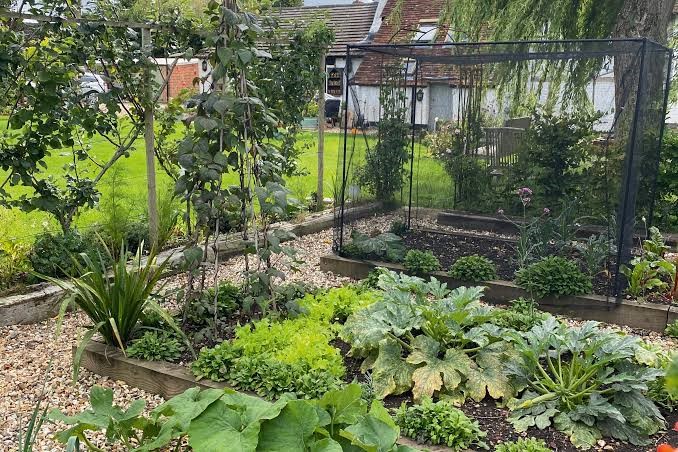
An attractive and valuable addition to the overall appearance of your English cottage garden is a vegetable patch. You’ll benefit from a plentiful crop in addition to taking pleasure in the beauty of blossoming flowers.
Pick a sunny location in your garden, then prepare the soil by removing weeds and introducing organic matter. For simple upkeep and organization, think about raised beds or dedicated rows.
Plant various crops, including tomatoes, lettuce, carrots, peas, and herbs, to establish an eclectic and fruitful patch. To ward off pests and draw beneficial insects, put companion flowers alongside your garden plants, including calendula and marigolds. As the plants grow, regularly water, weed, and offer them the support they need.
Tips for Maintaining English Cottage Garden
An English cottage garden must be maintained to maintain its attractiveness and long-term health. Below are some crucial points to help you maintain the best-looking English garden ideas possible:
- Pruning routinely: Prune blooming shrubs, trees, and other plants as necessary to keep them in form and promote healthy growth. Eliminate old flowers and prune overgrown branches to encourage fresh blooms and keep the desired structure.
- Weed management: Routinely weed your garden beds to keep weeds from taking over your cottage garden. Moreover, use your hand to remove weeds or cover them with mulch to prevent their growth and keep moisture in the soil.
- Watering: Give your plants enough water, particularly during dry spells or the hot summer months. To promote vigorous root growth, water profoundly and steer clear of shallow, frequent irrigation.
- Fertilization: You must feed your plants with organic fertilizers to replace the nutrients in the soil and encourage healthy growth. For each kind of plant, adhere to the advised application rates and timing.
- Deadheading: Frequently remove faded or spent blooms to promote continued blooming and stop the plants from going to seed. Deadheading extends the blooming time and redistributes energy toward new growth.
Conclusion
Achieving harmony between fostering nature’s untamed beauty and attending to its requirements is necessary to preserve your English garden ideas. It is a labor of love that pays off in the form of a mystical paradise brimming with vivid hues, alluring aromas, and a serene atmosphere. Remember to pause occasionally and take in the beauty around you as you prune, weed, water, and care for your plants. Enjoy the whirring of the wings, the symphony of the tunes of nature, and the exquisite blooms. You may escape the turmoil of the outside world in your English cottage garden while discovering inspiration in the straightforward pleasures of gardening.
Frequently Asked Questions
Can I Plant an English Cottage Garden in Pots or a Limited Area?
Absolutely! You may create a delightful English cottage garden in a tiny area or containers by selecting compact plant kinds and utilizing vertical elements like trellises and hanging baskets. With unique container gardening techniques, you may still experience the elegance of an English cottage garden despite space restrictions.
What Common Flower Selections Are There for An English Cottage Garden?
Lavender, roses, delphiniums, peonies, and daisies are the most common flower selections for English garden ideas. These traditional flower selections provide an English cottage garden with color, scent, and romanticism.
How Will I Create Privacy in My English Cottage Garden?
Consider adding tall blooming plants, trellises with vines that climb them, or shrubs and hedges to the margins of your yard to provide privacy. Give your English cottage garden a feeling of solitude and intimacy by adding plants and natural materials in the right places.




